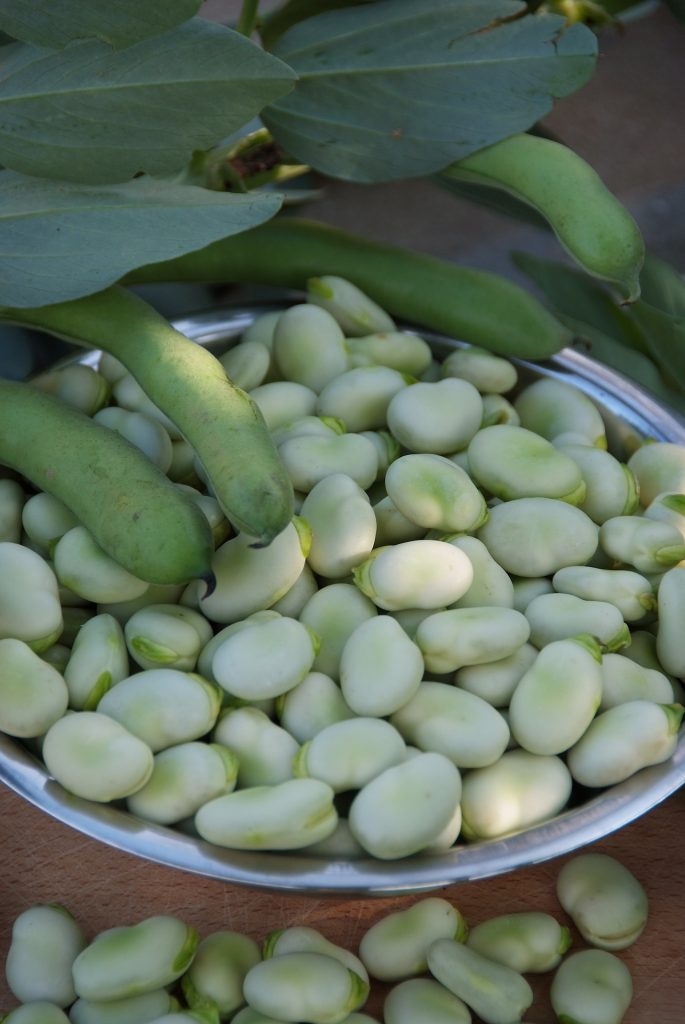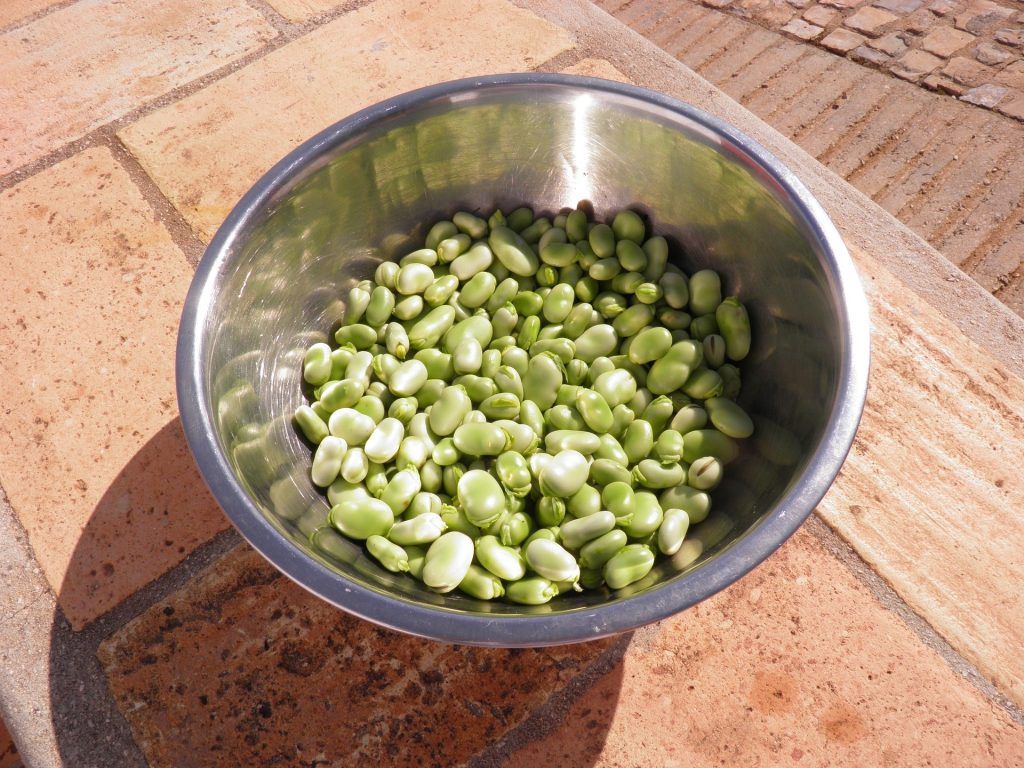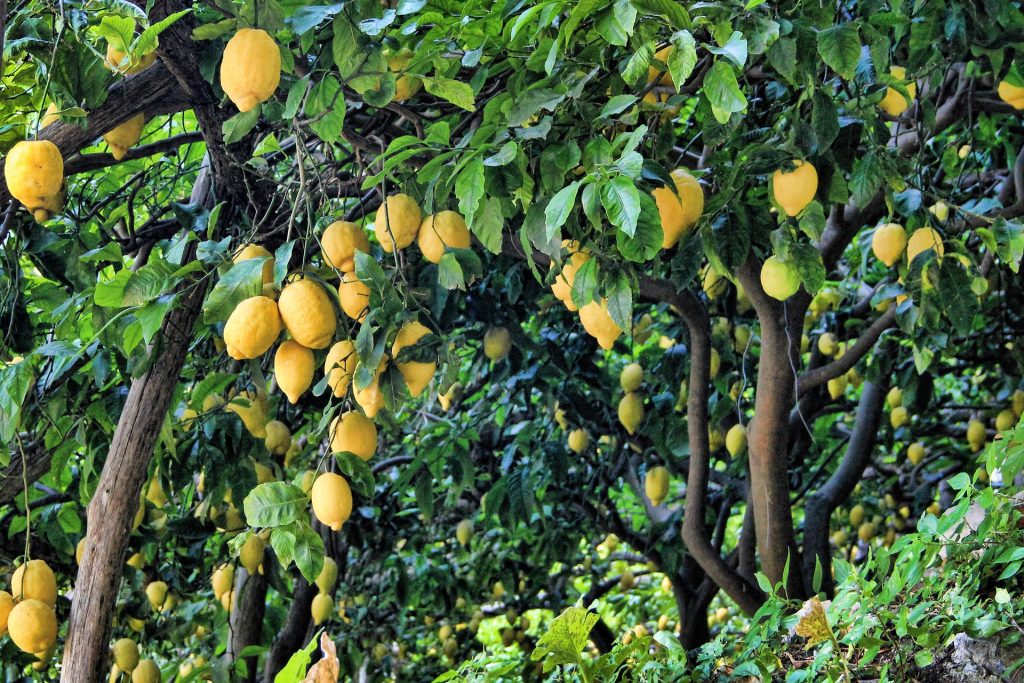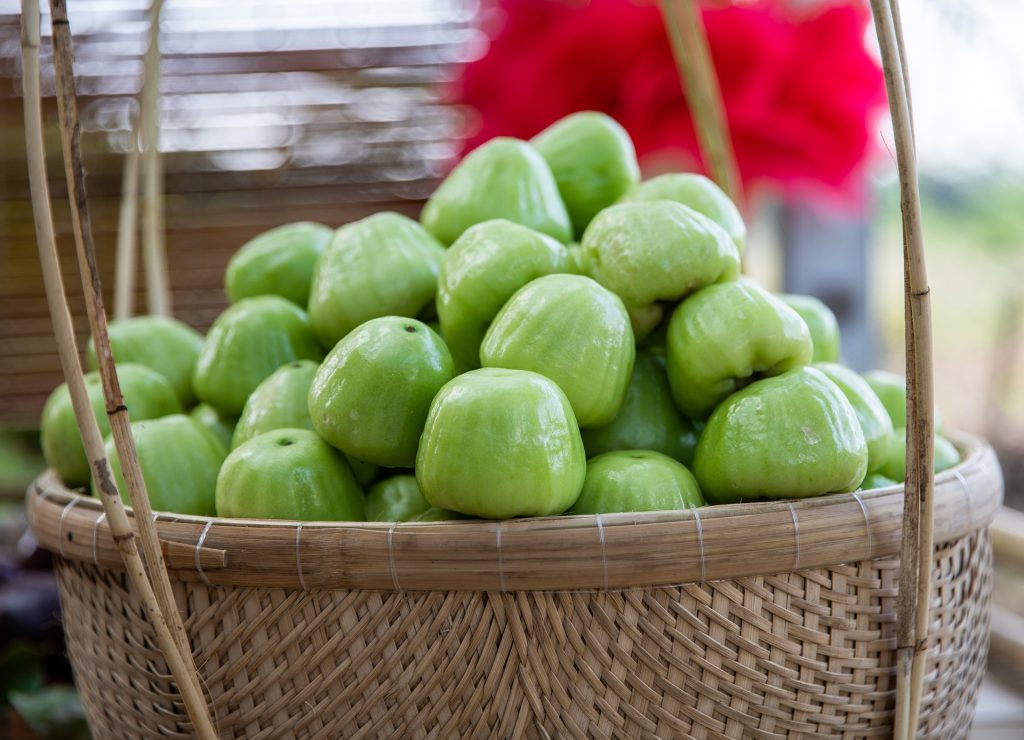Blog
Find articles that matter. From trading to shipping, trends to valuable goods, you can deep dive into everything you need.
Latest Posts
Blog
Ever since the Second World War, the automobile sector has grown in importance across the world. However, due to the Coronavirus, motor vehicle output fell dramatically in 2020. In comparison to the over 92 million vehicles, trucks, and vans manufactured in 2019, less than 78 million were produced in 2020. A decline of more than 14 million, bringing the total back to how it was in 2010.
This decline, followed by ten years of continuous growth, fortunately, did not continue into 2021. In 2021, 79.1 million motor vehicles were produced worldwide, a 1.3 percent increase over 2020. And things seem to be on track for another growth period.
The outlook for the next ten years looks optimistic according to the “Global Automotive Market” report. The Global Automotive Market was 85.32 million units in 2020, and it is predicted to reach 122.83 million units by 2030, according to the research. From 2020 to 2030, the industry is predicted to increase at a CAGR of 3.71 percent.
East Asia, North America, and Europe continue to be the world's largest car-producing areas, with India, Brazil, and Thailand all producing substantial numbers of automobiles.
In today's post, we'll look at numerous facts, such as which countries manufacture the most automobiles and more.
China
China's automotive sector has been the world's largest in terms of vehicle unit output since 2008. China's yearly automotive output has exceeded that of the European Union, the United States, and Japan combined since 2009.
The country completed about 26 million motor vehicles in 2019. This accounted for around 28 percent of all automobiles and trucks manufactured. Approximately 83 percent of China's manufacturing was for personal passenger automobiles, with the remaining 4.3 million vehicles for commercial purposes. SAIC Motor Corporation is China's largest car manufacturer, with 6.2 million vehicles sold in 2019.
While the majority of automobiles made in China are sold within the country, exports totaled 814,300 units in 2011. China's domestic market provides a stable foundation for automakers. And Chinese economic planners intend to establish internationally competitive car companies that will grow more appealing and dependable over time.
United States of America
The automobile industry in the United States began forming in the 1890s. And quickly grew to become the greatest in the world due to the size of the home market and the use of mass production. The United States was the first country in the world to have a mass-market for car manufacturing and sales. Still, it continues to be a forerunner in the automotive industry and mass-market production process.
Global rivals arose throughout the twentieth century, particularly in the second half of the century. European and Asian markets such as Germany, France, Japan, and Korea showed themselves as competent players in the industry.
Despite manufacturing only 9.1 million cars and trucks in 2021, the US remains the world's second-largest automaker. The country has a market share of just under 12 percent. Despite producing fewer passenger automobiles than Japan or Germany, the country manufactured nearly twice as many commercial vehicles as any other country, including more than five times as many as Japan.

Germany
The automobile sector in Germany is one of the greatest employers in the world. It employs about 857,336 people according to the 2016 statistics.
As the birthplace of the modern vehicle, Germany's automobile industry is often recognized as the most competitive and inventive in the world. It is the third-highest car output and the fourth-highest overall motor vehicle production.
The country's automobile sector is now dominated by five German corporations and seven brands. These are Volkswagen AG (including subsidiaries Audi and Porsche), BMW AG, Daimler AG, Adam Opel AG, and Ford-Werke GmbH. Every year, about six million automobiles are manufactured in Germany, with German brands producing around 5.5 million abroad.
Spain
Spain is Europe's second-largest carmaker and the world's eighth-largest. In recent years, Spain's automobile sector has seen a fall in productivity. Despite this, the Mediterranean country is one of the world's top carmakers. It is second only to Germany among European countries, with 2.2 million units produced in 2020.
In 2019, 82 percent of automobiles made in Spain were exported to more than 100 countries. In 2019, 2,310,070 automobiles were shipped to overseas markets, with nearly two million exported to EU countries, and exports to non-EU destinations climbed dramatically.
The sector is critical to the country, accounting for 10 percent of Spain's GDP and 18 percent of total exports.
Turkey
Turkey ranks 4th in Europe and 13th in the globe in terms of vehicle manufacturing figures. This is all thanks to its strong and successful industry players. And when it comes to commercial vehicle manufacturing numbers it ranks 1st place in Europe.
Turkey is a significant manufacturing and engineering base in the global automobile industry value chain. With this strength, Turkey has the world's 15th biggest automobile sector, with an average export rate. In terms of manufacturing, export, and engineering for worldwide markets, Turkey is a center for global brands.
The Turkish automobile sector is mostly concentrated in a few cities: İzmit, Bursa, Ankara, İzmir, and Aksaray. Global automotive manufacturers profit from Turkey's ideal location and convenient transportation options. And they make significant expenditures to grow their manufacturing there.
The Turkish automotive industry, which has established itself as a production center of excellence, is now focusing on increasing its R&D, design, and branding skills. As of 2022, 191 R&D and design facilities are operated by automobile manufacturers and suppliers in Turkey.
Turkey has become the largest export base of global OEMs outside of the EU, with an average export rate of 85 percent. Furthermore, component exports have climbed by 13 percent in recent years in tandem with global changes. In 2019, total exports totaled 31.2 billion dollars. Almost half of this sum is derived from Ford Otosan and Oyak Renault exports.
Textile products and apparel are processed vegetable fibers that people have used for thousands of years depending on environmental conditions and cultural and economic changes. Depending on globalization and changes in the fashion industry all over the world, the choice of traditional clothing has changed greatly. There has been an increase in the frequency of changing clothes because both women and men follow the fashion trends and apparel sector more. Moreover, the sudden seasonal transitions force people to buy new clothes according to weather conditions. Even social media triggers people to show their new clothes.
While people are now buying more clothes than before, the variety of brands and products is also increasing. For exactly these reasons, countries that diversified their production took a step forward in the textile and apparel industry. Turkey, a market competitor to Asian countries that stand out in world textile and clothing exports, especially since the 1980s, increases sectoral competition. So, which are the countries that export the most textile and clothing in the world, and what are the current situations of these countries?
The History of Textile
The word textile is derived from the Latin word "texere " and means knitted fabric, fiber. Depending on environmental conditions and migration, the need for clothing has begun. Especially since the 20th century, with the use of dyestuffs in fabrics, modern textile and clothing technology has become increasingly widespread. People used animal skin as the first clothes, and then they produced clothes by using reeds and various grasses and producing straw weaves. Weaving activities, which first started in Anatolia, China, and India, started as wicker knitting and basketry.
With the use of silk spinning and animal wool starting from 4000 BC, fabric production is seen especially in China and Anatolia. The historical silk road is the most concrete example of this production and trade. In the Middle Ages, textile products created by using linen and cotton became more common. Especially in the industrial revolution that started in England in the 18th century, textile has been the most influential sector with steam power. Mainly with the cotton brought from colonized India, England directed world trade.
After the Second World War, the textile industry, which is more related to fashion, has become widespread in the world. Countries such as India, China, Vietnam, and Turkey have come to the fore with the redirection of production to the Asian continent.
Which Countries Dominate the World with Textile and Apparel Exports?
The global value of the textile industry, which was 920 billion dollars in 2018, is expected to reach 1,230 billion dollars by 2024. It is expected that the textile industry will be used more in other areas such as automotive, interior, and exterior decoration, especially with the use of non-woven fabrics and yarns. In other words, the textile and apparel sector will continue to develop by keeping up with new technologies. So, which are the countries that export the most textiles by increasing their production in the world? Let's get detailed information by examining these countries one by one.
Turkey
Turkey became one of the countries that made an attack, especially with the decrease in production in China and India due to the covid 19 epidemic. In 2020, the Turkish ready-made clothing industry ranked higher in the export ranking due to both its successful performance and the reduction of production by its competitors. Despite the 25 percent decline in exports in India, Turkey shrank by a limited rate of 3.1 percent, but changed its place in the ranking and rose to 4th place.
Especially the European Union countries' orientation towards Turkey as it is a close market has increased Turkey's exports. Following that Most of Turkey's exports in 2021 were made to European Union countries. In the January-April 2021 period, exports to Europe alone increased by 20.1% compared to the previous year and reached 3.4 billion dollars.
Turkey exports to approximately 190 countries in the textile and ready-made clothing sector. In the January-August period, the countries with the highest textile exports were Italy with an increase of 56 percent, Germany with an increase of 20 percent, and the USA with an increase of 51 percent. Turkey realized exports worth 11.8 billion dollars in the last 12 months on a sectoral basis. Together with the ready-made clothing industry, export of approximately 18.6 billion dollars was made at the end of the year.
In recent years, Turkey has increased its textile exports to countries and regions such as the Middle East, Russia, and Ukraine, especially to expand its market share. Especially the clothing stores opened in the Middle East and Asian countries increased the demand for Turkish textile and ready-made clothing products in these countries. Turkey has extremely diverse and internationally branded textile products, especially in women's, men's, children's clothing, and silk fabric trade.
India
There are two types of textile industries in India. The first is more traditional and small-scale production facilities based on handicrafts, while the others are modern production types based on ready-made clothing. Due to the chaotic situation caused by the Covid-19 epidemic in India, there has been a decrease in textile exports. Being geographically far from Europe and the USA, India, which is preferred due to its relatively cheap labor force and cost, directed these countries towards Turkey. India, the world's 5th largest textile exporter, exported $12.27 billion from April 2020 to March 2021. About 50% of India's exports are to European Union countries.
Vietnam
Vietnam recorded the biggest increase since 2020. According to World Trade Organization data, Vietnam's global share was 6.20% in 2019, while this rate increased to 6.40% in 2020. Vietnam, which remained behind Bangladesh until 2020, surpassed Bangladesh with this value. Vietnam exported a total of 29 billion dollars of textile and apparel in 2020. In this period, Asian countries, which were less affected by the covid-19 epidemic, took an advantageous position.
China
China is the world's largest textile producer and exporter with its manpower, cheap cost, and advanced textile raw material production. Thanks to chemical fiber production, China is a country that can make mass production and produces cheap products. Despite the pandemic, China increased its global market share from 30.80% in 2019 to 31.60% in 2020. In 2021, an increase of 8.4% occurred in China's exports compared to the previous year. From January-April 2022, China made a total of US$ 95.84 billion in exports, an increase of 8.65 percent compared to the same period of the previous year.
Top Quality Textile and Apparel Products from Turkey to the World
Continuing all processes from production to transportation by considering human health as the top preference in clothing imports. In this regard, you can buy clothes that do not harm human health with the assurance of Turkish Goods. No matter where you are in the world, Turkish Goods delivers the best quality and suitable textile products for children's, men's, women's clothing, and silk fabric types.
Summer vacation is an activity that many people dream of and start planning ahead of time. Destinations, budget, tickets, and the items you will take with you are included in your summer vacation planning. Summer travel essentials are of great importance to make your summer vacation more enjoyable and comfortable. So, what kind of "life-saving" products are needed for a summer vacation? Which products should you import?
What are Summer Travel Essentials?
It is as important for every person to have a pleasant and comfortable vacation as it is to have a vacation. Although transportation facilities are highly-developed today, you can manage your holiday more easily with the travel products that will accompany you on your summer vacation. We can list the essentials that you should have with you on your summer vacation as follows:
- A useful suitcase
- Sunscreen
- Other cosmetic products (cosmetics, moisturizers, etc.)
- Beach items (hat, beach towel, slippers, and sunglasses),
- Medical kit
- Charger
- Portable power bank
They are the essentials that are both needed and have the effect of saving the holiday. Let's take a closer look at these products, and let us help you determine the products you wish to import.
Suitcase
The suitcase is undoubtedly one of the most important holiday essentials of summer. The suitcase, which you can choose in various sizes, can help you spend your summer vacation quite efficiently. You can start by choosing the size of your suitcase for your needs and the number of days you will stay. It would be good for you if your suitcases are suitable for airport transportation. Moreover, it can be resistant to impact and have more compartments. You can also choose suitcases made of light and durable materials that you can carry and lift easily.
If your luggage is not lost or stolen, you can choose suitcases with encrypted access. If you are considering a long stay, you can choose checked suitcases or carry-on suitcases. For a shorter trip, a duffel, travel backpack, or weekender bag can be preferred. If you are traveling for business, you can bring a separate laptop bag for your computer.
Sunscreen and Other Cosmetic Products
Sunscreen and other cosmetic products are among the most needed items during the summer holidays. It is very important and necessary for your health both before swimming and sunbathing. In addition to protecting your skin from the harmful rays of the sun, it also reduces the pain of sunburns on your skin.
Other cosmetic products are more geared towards meeting your daily needs. For example, you can choose travel-size products for shampoo, shower gel, and soap that you will use in the shower. Your hair may be damaged during the summer holidays due to frequent swimming and hot weather. To prevent this from happening, it is useful to take your regular hair conditioner with you.
Moreover, you could bring deodorant and fragrant perfumes with you in case you feel smelly. If you want to apply make-up before going to have fun, you should put your make-up items in your suitcase. If you wish, you can have a more organized holiday by carrying make-up materials in your bag. Moreover, you can easily find the products you are looking for.

Beach Items
It is vital to go to sunbathe on the beach and enjoy nature and historical places during the summer vacation. While doing these activities, hats, sunglasses, and beach towels will be the items you will need the most. Hats will protect you from the sun while sunbathing and allow you to reflect your style as a stylish accessory. In addition, a hat is necessary for long nature walks in order not to be affected by the sun.
Sunglasses, as the name suggests, will protect your eyes from sunlight and make you comfortable. You can wear sunglasses especially while sunbathing on the beach or walking around. Moreover, you can wear sunglasses at dinner by combining them with your other clothes. The beach towel, on the other hand, has the function of protecting your back when you both dry and lie on the sun lounger after swimming. You can choose beach towels from colors that are made of cotton fabrics that will not make your skin sweat and that will not stain easily.
Beach slippers can be used both to walk more comfortably and prevent damage to your feet by thorns and small stones on the beach. You should check whether your beach slippers are non-slip soles and flexible or not.
Medical Kit
Although our holidays are pleasant times, sometimes undesirable health conditions may arise. If the location you are in is far from a health institution, you should have a medical kit with you. Basic first aid supplies, hygiene items, and face masks can be found in the medical kit. In addition, if you have a chronic disease, you should have your medications with you. Sanitizer and gloves against infectious diseases, especially Covid 19, can also be found in the medical kit.
Chargers and Portable Power Banks
In the digital age we live in, communication and social media have become almost as important as daily needs. Although we are away from work and digital life on vacation, we also need phones during vacation for communicating with our loved ones, social media sharing, and instant status notifications. At this point, chargers are very important. Before leaving the hotel room or your stay, you should make sure that you fully charge your phone. If you are going to be on the beach or on a tourist trip from morning until late, it may be useful to take a power bank with you.
We Deliver the Products Needed During the Summer Holidays with the Assurance of Turkish Goods
As Turkish Goods, we offer a wide range of products in the areas we operate. We deliver the best quality products to you with the best price options. Wherever our customers are in the world, we provide them with a price guarantee for the essential products needed for a summer vacation.
Summer is here, and with it comes an abundance of great summer vegetables ready to add some freshness to your meals. While many veggies (and fruits) are now available all year, there's nothing like biting into freshly grown corn or mixing up a salad loaded with luscious summer tomatoes.
Summer is also an excellent season to stock up on vegetables such as cucumbers, zucchini, and beans. As seasonal food and eating, in general, are a huge part of life in Turkey, it’s not a surprise that there are a lot of summer vegetables to enjoy.
So, what are the seasonal summer vegetables you should be importing from Turkey?
Cucumber
Cucumbers are a favorite crunchy addition to salads, as well as for snacking or pickling. They are high in essential minerals, as well as plant chemicals and antioxidants that may aid in treating and preventing certain illnesses.
They are also low in calories and high in water and soluble fiber, making them great for improving hydration and weight loss.
Tomatoes
The tomato is a versatile late summer vegetable that is extensively used in international cuisines. It is delicious whether directly from the vine or when slow-cooked, and even sweet enough to be churned into ice cream. It is one of the most widely produced crops, as they are used to make a variety of products such as canned tomato paste, ketchup, pickles, and tomato juice.
Turkey is third in the world in tomato production, with about 13 million tons produced each year. It is the most widely grown vegetable in Turkey, accounting for 42 percent of total vegetable production.
Peppers
Whether they are red, green, or bell, peppers are an indispensable part of almost every cuisine. Peppers come in every shape and size you can think of, from big and delicious to microscopic and spicy. They thrive in hot conditions, so summer is the perfect time to consume them.
In 2021, Turkey exported 192,266,805 kg of pepper, earning $199,437,051. When compared to the previous year, pepper exports increased by 27% in both quantity and value. Russia, Romania, and Germany are the top three nations importing the most veggies from Turkey in both 2020 and 2021, with demand growing year after year.
Zucchini
Zucchinis fall under the “summer squash” branch of the squash family. Summer squashes, unlike their autumn and winter counterparts, are plucked when their skin is still soft and delicious. The term "summer squash" relates to the gourd's limited shelf life in comparison to hard-shelled pumpkins.
Zucchini reigns supreme in this squash family, and it's perfect for frying, sautéing, steaming, grilling, or stewing. Bags of buttery squash blossoms may be found at your local farmers' market in late spring and early summer.

Beans
Summer is built for beans – not only baked beans but also three-bean salad and breaded, deep-fried beans because nothing tastes better than taking something nutritious and turning it into something delicious. They are probably one of the most readily available vegetables at the grocery store.
Bean production in Turkey was completed on an area of 88.9 thousand hectares during the 2019/20 crop season. The Central Anatolia Region supplied 62.1 percent of Turkey's bean production with 225 thousand tons in the 2019/20 crop season.
Aubergine
Aubergines are available in a variety of forms, sizes, and colors. Whether it's milky white or pitch black, aubergine is a versatile summer vegetable that may be grilled, fried, sautéed, or baked. Although officially a fruit, aubergines with mild flavors and delicate flesh are typically utilized as vegetables.
The bulbous, glossy, deep purple zeppelin form used in Mediterranean cuisine; the compact and plump ivory-colored aubergine from the United States and Australia; and the considerably smaller variants produced in Thailand are among them. They all have a moderately smokey flavor and a spongy texture when fresh but soft when cooked.
Corn
Corn is made up of rows of densely packed golden yellow kernels that grow along with a sturdy central core. When the kernels are mature, they are delicious and juicy, and they are best cooked simply with a little butter. The natural sugars in the kernels, like peas, quickly convert to starch, making the kernels harder and less sweet, thus they should be consumed as fresh as possible.
Corn is grown in over 60 provinces in the Black Sea Region, the Mediterranean Region, the Aegean, Marmara, and Southeastern Anatolia. While maize cultivated areas in Turkey ranged from 6.6 to 5.9 million hectares from 2014 to 2018, they climbed by 8% from the previous years to 6.4 million hectares in 2019. Corn output climbed by 8.3 percent to 6.5 million tons in 2020, from 6 million tons in 2019.
Okra
Okra is a summer vegetable used in West African, Indian, and Southern cooking. Producing fuzzy and fibrous pods, okra is a key ingredient in slow-simmered stews like gumbo or gravy-like curries.
Okra is abundant in nutrients while being low in calories. They include vitamin C, which helps with immune function. It also has a lot of vitamin K, which helps with blood clotting. Okra thrives in hot, humid areas. Turkey is one of the leading countries in producing okra.
Asparagus
Asparagus is the early shoots of a cultivated lily plant that requires a lot of work to mature. They're regarded as one of the world's treasures, with a price tag to match, and have a unique, deep savory flavor.
Turkey is one of the nations where asparagus is grown. The climatic zone in which Turkey is located is ideal for asparagus production. Muğla, Manisa, and Aydın are Turkey's most cultivated provinces.
Fresh Summer Vegetables from Turkey
Turkish Goods is a company that sources fruits and vegetables from Turkey's top suppliers and distributes them to wholesalers. Fresh and dried fruits, vegetables, greens, and nuts are exported in large quantities to nations all over the world.
Our extensive wholesale fruits and vegetables are provided all year, with each client receiving personalized planning of all export procedures from Turkey on an international standard. We provide the finest of Turkey directly to your doorstep.
Establishing a business has many different aspects that business owners need to deal with. After finally deciding on what kind of a business it will be and the business' niche, the most essential question surfaces. How will you choose the right products when it comes to sourcing? Which products are the best to import? Which products will make your business stand out?
Answering these questions will be fundamental to having a successful business. Because the products you will be importing and offering to your customers need to meet the current demand in your niche. However, that is not the only thing you should consider. All of these questions and even more will be answered in this blog post. Keep on reading to learn more about choosing the right products to import.
Choosing the Right Products to Import
Choosing the right products comes down to a few essentials. There are a few different things you need to consider as a business owner when it comes to choosing the right products to import. Because defining which product is right for your business is an important step and the answer will be different for each business. Depending on the niche of the business, the market trends and many other elements, the answer can change significantly. Let’s take a detailed look into each of these elements.
Know the Products Well
First of all, as a business owner, you need to know the products in your niche well. You need to be familiar with these products to a point where you can easily differentiate between low-quality and high-quality products. This is also helpful in knowing if a product is worth its sale price. If you want your business to stand out, you cannot achieve the success you are dreaming of with low-quality products.
Depending on your budget, you should examine the products well and choose the highest-quality products you can get. However, this will only be possible if you know the products in your niche well. On the other hand, it can be difficult to sell high-quality yet expensive products. Therefore, it is important to choose high-quality and affordable products.
Know the Market Trends
Market trends change constantly and a business owner must follow them closely. Trending products may change seasonally or annually, depending on the market and this strongly affects the demand for these products.
Following the market trends closely can help you choose the right products for that period. Because you know that your customers will be demanding those products soon or in that particular time period. This will not only meet the demand and help you gain customers, but it will also help you profit since the demand will be exceptionally high.
Choose Products That Will Sell
Even though this might sound similar to knowing market trends, it is slightly different. Certain products sell in certain niches regardless of the market trends that change over time. These items can be timeless products that the consumers in a certain niche are always demanding.
These items can also be the products you certainly know the consumers will love and buy.
Finding which products will be loved and purchased by your customers requires you to know the market as well as the target audience. Analyzing the consumer habits and the age range your business is attracting can help immensely in analyzing which products will sell. Choosing the products that will sell will help you gain consistent profit and it will also contribute to consumer satisfaction.
Find Unique Products
Knowing the market for your niche is also important to know which products are in demand or are expected to be in demand but cannot easily be found. If you can identify these unique products and source them, it will make your business stand out from the crowd. Consumers will prefer to shop from you since they can easily find any product that they are looking for. Therefore, analyzing the market and determining which products are scarce can be a great way of choosing some of the products you will import.
On the other hand, unique products can also be products with unique designs. Even though the product itself is common, its design or features can make it unique. Some consumers prefer products with unique designs. Therefore, it may be a good idea to opt for products with interesting features or designs for a change and make your business stand out.
Attend Trade Shows
International trade shows are great ways to meet manufacturers and suppliers from all around the world. It is also a great opportunity to learn more about the products in your niche, what is trending and which products are in demand. It is also one of the best ways to follow the latest developments in your field. Attending trade shows will not only help you choose the right products but it will also be a great networking opportunity.
You can find reliable manufacturers and suppliers for your business to source products consistently. You can travel to other countries to attend the most popular international trade shows in your field. Alternatively, you can also attend the popular trade show where you live. The local trade shows can help you meet local manufacturers and suppliers as well as international ones.
Choosing the Right Supplier Is as Important as Choosing the Right Products
Choosing the right products is important for sure. After considering the elements we have mentioned above and deciding on the products you want to import, there comes another important step. It is finding the right supplier. If you cannot find a reliable supplier, choosing the right products will not be enough. The supplier should be able to supply the products you are in need of. On top of that, the prices they offer should be affordable. The products should reach you in great condition and in time. It is true that finding all of these at once is quite difficult. But it is not impossible.
Turkish Goods offers over 1000 high-quality products in over 100 categories to its partners around the world. By working with a vast network of suppliers in Turkey, Turkish Goods is able to offer the best global wholesale price for each product. All you need to do is visit Turkish Goods, browse through a wide range of products and order whichever product you need. With a professional team working 24/7 and offering support in 13 languages, you will get a quotation in only 48 hours.
When you work with Turkish Goods, you also don’t need to worry about the importing process. Experts at Turkish Goods take care of the entire process from logistics to private labeling. Therefore, any product you need is only one click away. Turkish Goods will take care of the rest.
When it comes to planning the cargo procedure, the transportation mode is crucial. When deciding on the mode of transportation, you have to consider the cost, the urgency of the cargo, the value of the delivery products, as well as the size and weight of the commodities.
In short, there are several methods for transporting your cargo to its final destination. Products can move by road or rail through the land, by cargo ship across oceans and seas, and by freight carrier plane in the air. The question we’re often asked is; which mode of transportation is best for transporting my goods?
Finding the Right Mode of Transportation
Different types of goods require different types of transportation. The kind of goods transportation is determined by several factors:
- The company's products and their types, such as perishables or non-perishables, breakables, and so on.
- Production lead times from suppliers.
- Availability of the product.
- The source of supplies, i.e. the pick-up location, such as Turkey or elsewhere.
- Customs and Excise regulations, such as tariff and quarantine requirements.
- Volume.
There are various aspects to consider when deciding on the best form of transportation to get products from point A to point B. The choice of the appropriate method of transportation is crucial to the success of business and logistics management. Shipping and logistics expenses are significantly reduced when transportation equipment and modes are used effectively.
Which Transportation Method Is the Best?
A cargo voyage is typically multimodal, including the use of many modes of transportation to reach a destination. They'll most certainly go by road at the beginning and finish of the procedure, but what about in the middle? There are usually one or many basic modes of transport to select from when determining how your cargo is sent, and you should evaluate how your shipment will travel.
Choosing a primary means of transportation is a major choice that has a significant influence on elements such as delivery speed, shipping costs, and the risk of delay or damage. We'll go over the benefits and downsides of each form of transportation in this post.
Sea Freight
Sea freight is a means of shipping huge quantities of commodities by ship. Containers are filled with goods, which are subsequently put aboard a vessel. Sea freight is a cost-effective technique to transfer huge volumes across long distances because a typical cargo ship can carry roughly 18,000 containers.
Global reach
Sea movements can be more prone to the delay by poor weather and are typically slower, but they make up more than enough for the lack of speed with their reach. Nowadays, you may move cargo practically anywhere by water, as there is almost always a port of entry nearby.
Cost-Effective
For whatever amount of cargo, sea freight is extremely cost-effective. Large volumes of packaged products or bulk shipments can be transported by ships across long distances or short distances at a cost that is typically unmatched by other modes of transportation. Smaller amounts of bottles, cases, and pallets move at competitive pricing since freight forwarders may divide space in their containers among shippers.
Furthermore, companies are putting greater attention to the environmental effect of shipping. Sea freight is by far the most carbon-efficient mode of transport. Today, 90% of all goods reach their destinations via ocean routes, resulting in a giant and robust global shipping network.
Air Freight
Air Freight parcel delivery is the transfer and shipment of goods via an air carrier, whether charter or commercial. Such shipments travel out of commercial and passenger aviation routes to anywhere planes can fly and land.
Low risk
Air travel is a very safe way of transportation. Perishable commodities have a short shelf life, and high-value goods require strict security procedures, making them great candidates for air freight. Damage to packing is less likely to occur while en route since flight routes may be swiftly and easily changed in poor weather compared to other logistical transit modalities.
Any amount of goods
Large amounts of freight cargo can be transported by air. Larger freighters capable of carrying up to 110 tons can be fully chartered. This form of transportation is, of course, uncommon, but it is possible.
Fast delivery
Airfreight cargo is unrivaled when time is of the essence, as cargo planes often fly at speeds of over 900 kilometers per hour. Furthermore, cargo planes often fly on direct flight lines with little possibility of traffic congestion in the sky, which contributes to their unrivaled delivery speed. The expense of air freight, both financial and environmental, is the trade-off; it is the most expensive form of transportation and the largest source of carbon emissions.

Rail Freight
When it comes to in-land transportation, rail freight is an underutilized means of goods transportation. It's shockingly fast, safe, and dependable, with rare delays.
Efficient
Railroads are the most efficient form of land transportation, and one train can haul the equivalent of over 400 trucks. On average, longer journeys tend to be less expensive by rail. However, there are certain additional expenditures associated with train travel: at either end of the rail transportation, a road delivery is required. But when compared to road delivery for longer distances, rail still manages to be lower on the cost.
Sustainable
Also, rail freight transit is an environmentally friendly solution for in-land cargo transportation. Because it runs on electricity, it generates very little CO2 when transporting enormous freight loads over numerous carriages and long distances.
Security
Where rail freight transit excels is in the degree of security it offers for the commodities it transports. Railways and freight terminals are relatively secure areas with low levels of criminal activity, making them the safest means to convey products across the land.
Road Freight
One of the most prevalent types of transportation is road freight. It is widely used on several continents, including Europe, Africa, and North America. The unified customs paperwork process allows for the smooth flow of products between many states and nations.
Less paperwork
Road freight requires less documentation, especially if vehicles do not cross borders. The transfer of products by road is also typically swift since there are a plethora of haulers with a variety of vehicle sizes available to convey your cargo.
Vehicle selection
Another advantage of road freight transportation is the variety of vehicles accessible to you. Aside from the physical dimensions of the trucks, there are a variety of connected alternatives, such as flatbeds, low loaders, curtain-sided trailers, tail lifts, and container lifts, to mention a few. So, whatever your loading/unloading capabilities, size, or distance, there is a road freight truck accessible for you.
In conclusion
There are several options for transporting goods, and there may not be a single solution that meets your demands. Each form of transportation has benefits and drawbacks. When preparing your cargo and selecting the best mode of transport, it is critical to prioritize your demands, comprehend your package, and compare prices. Alternatively, you can work with Turkish Goods and let the experts choose the best transportation method for you.










